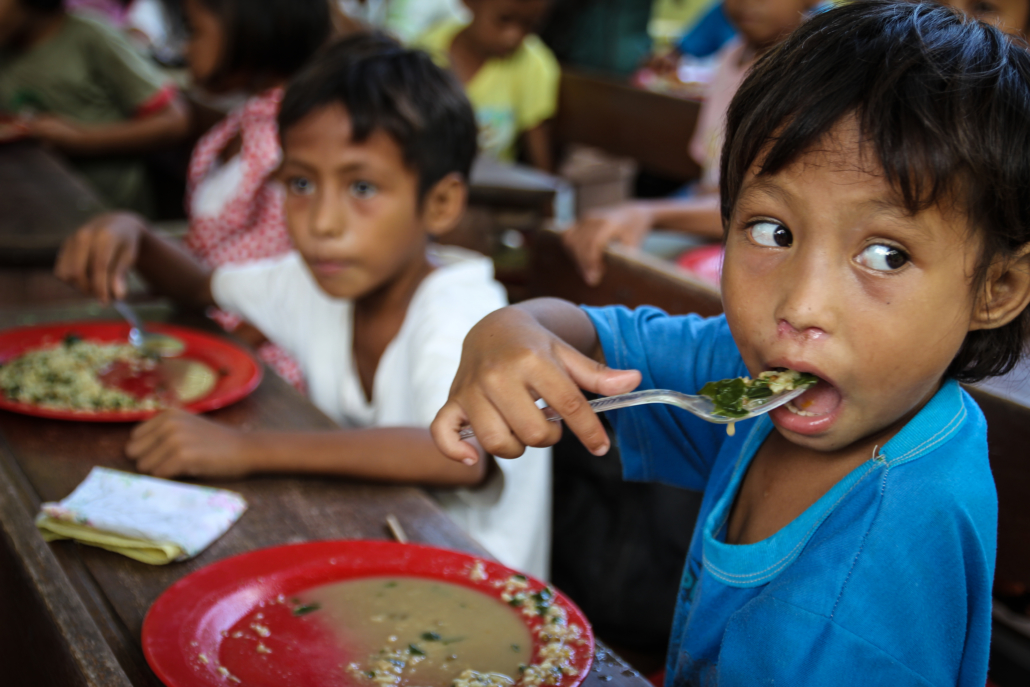Top 10 Facts About Hunger in Australia

Australia, home to more than 26 million people has one of the strongest economies in the world. However, a significant portion of Australia’s population suffers from food insecurity. Many are unable to afford enough food to feed both themselves and their families. Below are the top 10 facts about hunger in Australia.
Top 10 Facts About Hunger in Australia
- Approximately 3.7 million people in Australia suffer from food insecurity. According to Foodbank Australia’s 2023 Hunger Report, approximately 3.7 million Australians suffer from moderate to severe food insecurity, which is around 36% of the population.
- An estimated 1.2 million children are hungry in Australia. Foodbank Australia reports that 1.2 million children in Australia live in food-insecure households. Additionally, 45% of parents report that their children go a full day without eating fresh fruit and vegetables at least once a week. To fight this, some schools provide breakfast programs. In addition, charities such as Helping Hands provide families with weekly access to fresh food for a small donation.
- Women are more likely to suffer from hunger. Often due to living on low incomes or pensions, women are at a higher risk of hunger. Women are 9% more likely to suffer from food insecurity than men due to factors such as low wages and the burden of being primary caregivers.
- Indigenous Australians suffer disproportionately. Food insecurity affects 20-25% of Aboriginal and Torres Strait Islander Australians, both in remote and urban areas. In cities, Indigenous Australians are often subject to low wages and a lack of access to cooking facilities. In rural areas, options for purchasing food are limited. About 95% of Indigenous Australians aged 15 years and over report not being able to consume adequate amounts of vegetables each day, instead deriving sustenance from discretionary foods and drinks high in added sugar, saturated fat, salt, and alcohol as a result of unequal access to a healthy food supply.
- Hunger is a greater issue in rural and remote areas. Increased costs of food in rural, remote and regional Australia have significantly impacted the access to food in those communities. Australians who live in remote areas are 83% more likely to suffer from food insecurity than those in cities. Food relief charitable agencies play a crucial role in responding to the immediate needs of those experiencing food insecurity in both rural and remote areas.
- Hunger negatively impacts mental health. Food insecurity and poor diets are directly correlated to mental health issues such as depression, anxiety, stress, and suicide ideation. Children in food-insecure households in Australia are also likely to display emotional or behavioral difficulties and are likely to stop attending school.
- Australia’s high cost of living contributes to hunger. Wage growth in Australia has stagnated in recent years.. Real wages for teachers, nurses and other government workers have fallen by more than 10% post-COVID. Electricity prices have simultaneously skyrocketed. Consumer spending has inversely plummeted, as increases in wages have left many unable to sufficiently match increases in costs. .
- Single-parent households are more vulnerable. Food insecurity impacts 37% of single-parent households in Australia. The strained financial capabilities of single parents often affect their food purchasing decisions, preventing them from purchasing nutritious items such as fruits, vegetables and meat.
- External research on food insecurity intends to motivate the government to create policy solutions. The Australian government has yet to clearly establish legal obligations that focus on fighting food insecurity. Organizations outside of the state such as the Center for Nutrition & Health Impact have instead conducted real-world nutrition research to incentivize policy change and promote collaboration between countries equipped to assist including the United States.
- Charities strive to counteract the causes and effects of food insecurity. Charities such as Food For Change use land in partnership with other food relief groups to grow fresh fruit, vegetables, and herbs needed to help feed millions of hungry Australians who seek food relief every year. Another charity, OzHarvest, has implemented numerous food rescue operations throughout the country to meet its goals of halving food waste per capita by 2030, feeding vulnerable communities and promoting sustainable living.
These are the top 10 facts about hunger in Australia that illuminate the challenges many Australians face every day. Many factors contribute to food insecurity in the country and all too often put the most vulnerable at risk. However, organizations such as Food for Change and OzHarvest illustrate how the country is taking powerful steps to end hunger in Australia.
– Nicholas Bykov
Photo: Flickr
Updated: July 10, 2024
